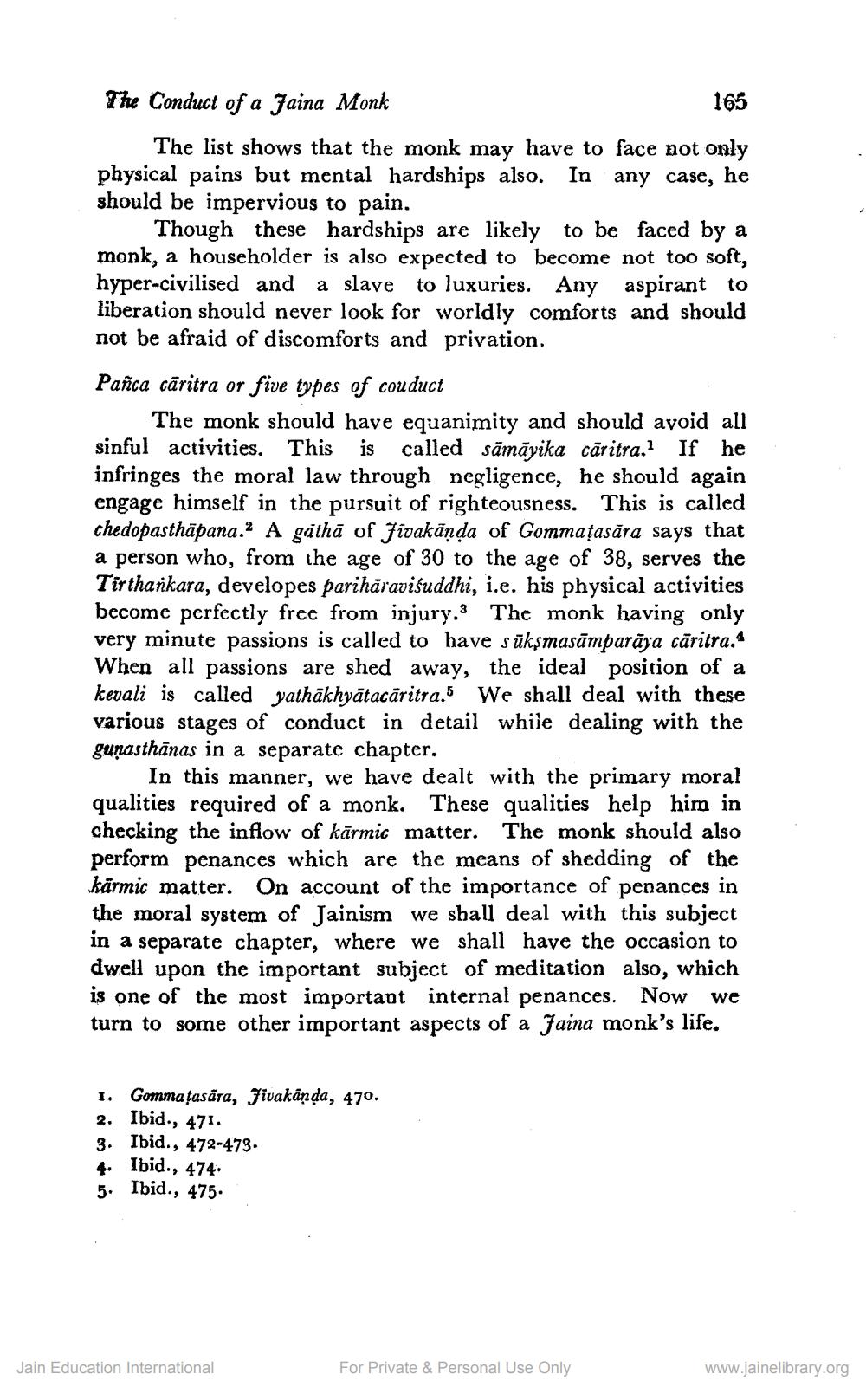________________
The Conduct of a Jaina Monk
165 The list shows that the monk may have to face not only physical pains but mental hardships also. In any case, he should be impervious to pain.
Though these hardships are likely to be faced by a monk, a householder is also expected to become not too soft, hyper-civilised and a slave to luxuries. Any aspirant to liberation should never look for worldly comforts and should not be afraid of discomforts and privation. Pañca cāritra or five types of couduct
The monk should have equanimity and should avoid all sinful activities. This is called sāmāyika cãritra.? If he infringes the moral law through negligence, he should again engage himself in the pursuit of righteousness. This is called chedopasthāpana.? A gathā of Jivakānda of Gommațasāra says that a person who, from the age of 30 to the age of 38, serves the Tirtharkara, developes parihāravifuddhi, i.e. his physical activities become perfectly free from injury.3 The monk having only very minute passions is called to have sūksmasāmparāja cāritra. When all passions are shed away, the ideal position of a kevali is called yathākhyātacāritra.5 We shall deal with these various stages of conduct in detail while dealing with the gunasthānas in a separate chapter.
In this manner, we have dealt with the primary moral qualities required of a monk. These qualities help him in checking the inflow of kārmic matter. The monk should also perform penances which are the means of shedding of the kārmic matter. On account of the importance of penances in the moral system of Jainism we shall deal with this subject in a separate chapter, where we shall have the occasion to dwell upon the important subject of meditation also, which is one of the most important internal penances. Now we turn to some other important aspects of a Jaina monk's life.
1. Gomma fasāra, Jivakânda, 470. 2. Ibid., 471. 3. Ibid., 472-473. 4. Ibid., 474. 5. Ibid., 475.
Jain Education International
For Private & Personal Use Only
www.jainelibrary.org




